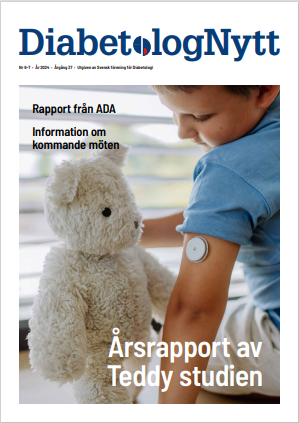Sulfonylureas Increase Mortality by 50 Percent
Data from a large retrospective cohort study suggested that, diabetic patients treated with three commonly prescribed sulfonylurea drugs had a 50% higher mortality risk compared with patients treated with metformin.
The relative risk ranged from 59% with glyburide to 68% with glimepiride. In the subgroup of patients with coronary artery disease (CAD), glipizide and glyburide had significant associations with mortality versus metformin but not glimepiride.
Kevin Pantalone, DO, of Summa Western Reserve Hospital in Cuyahoga Falls, Ohio, said at a press briefing that, ”Metformin, when not contraindicated, should be the first-line agent prescribed to control blood sugar levels in patients with type 2 diabetes.” ”This research is relevant to the general public because there are 25.8 million people with diabetes in the U.S. alone, 8.3% of the population,” he added. ”The medications under study in our report are some of the most commonly prescribed medications utilized in the treatment of type 2 diabetes.”
Until recently, sulfonylureas had been considered comparable in safety and effectiveness. Several studies have changed that perception by suggesting that some of the drugs might be safer than others, Pantalone said. Specifically, conflicting results have emerged from studies of the drugs’ cardiovascular safety. A theoretical difference in risk exists because the drugs vary with respect to hypoglycemic risk, sulfonylurea receptor selectivity, and effects on myocardial ischemic preconditioning.
Cost is not a distinguishing factor, as all three drugs are available in inexpensive generic forms. Metformin offers an alternative to sulfonylureas as first-line oral therapy for diabetes and also is available as a generic.
To continue the exploration of sulfonylurea safety, Pantalone and collaborators used an enterprise-wide electronic health record (EHR) system to conduct a retrospective study of diabetic patients who started treatment with one of the sulfonylureas or metformin from Oct. 24, 1998 to Oct. 12, 2006.
The search produced records for 23,915 patients. About half (12,774) started treatment with metformin, followed by glipizide (4,325), glyburide (4,279), and glimepiride (2,537). All patients were adults treated in outpatient clinics. Investigators excluded patients using insulin, other injectable diabetes medications, or multiple oral drugs for diabetes.
The patients had a median follow-up of 2.2 years and 2,546 patients died, as verified by the EHR or Social Security Death Index.
Overall, patients treated with a sulfonylurea had a mortality hazard ratio of 1.50 compared with metformin, including:
Glipizide — HR 1.64, 95% CI 1.39 to 1.94
Glyburide — HR 1.59, 95% CI 1.35 to 1.88
Glimepiride — HR 1.68, 95% CI 1.37 to 2.06
Because recent reports suggested sulfonylurea risk varied in patients with CAD, investigators conducted a separate analysis of 2,721 patients with a history of CAD. Pantalone said 419 deaths occurred during follow-up in that subgroup.
As compared with metformin, patients who started treatment with glyburide had a 38% increase in the mortality hazard (HR 1.38, 95% CI 1.04 to 1.83), and there was a 41% increased risk in patients started on glipizide (HR 1.41, 95% CI 1.07 to 1.87). Only glimepiride was not associated with an increased mortality hazard versus metformin.
”Our results suggest that if a sulfonylurea is required to control blood sugar levels, glimepiride may be the preferred sulfonylurea in those with known coronary artery disease,” Pantalone said.
Alvin Powers, MD, of Vanderbilt University in Nashville, Tenn., who was not involved in the study feels that the story about sulfonylurea safety will continue to evolve as more information becomes available. ”What we really need is a prospective comparison, which is one of the standards now being used by the FDA on the cardiovascular risk of drugs,” said Powers, who moderated the press briefing. ”We don’t know enough about those drugs [sulfonylureas].”
”I think metformin remains the primary drug,” he added. ”I think that in studies we’ve shown that glipizide and glimepiride are probably preferred over glyburide because of the length of the studies. I think that, because glycemic control is important, the second-line drug still can be a sulfonylurea.”
Practice Pearls:
Diabetic patients treated with three commonly prescribed sulfonylurea drugs had a 50% higher mortality risk compared with patients treated with metformin.
Point out that cost is not a distinguishing factor, as all three drugs are available in inexpensive generic forms.
Note that this study was published as an abstract and presented at a conference. These data and conclusions should be considered to be preliminary until published in a peer-reviewed journal.
Pantalone KM, et al ”Increased risk of overall mortality in patients with type 2 diabetes receiving glipizide, glyburide, and glimepiride vs. metformin: A retrospective analysis” ENDO 2012.
Diabetesincontrol.com
Nyhetsinfo
ww red DiabetologNytt





